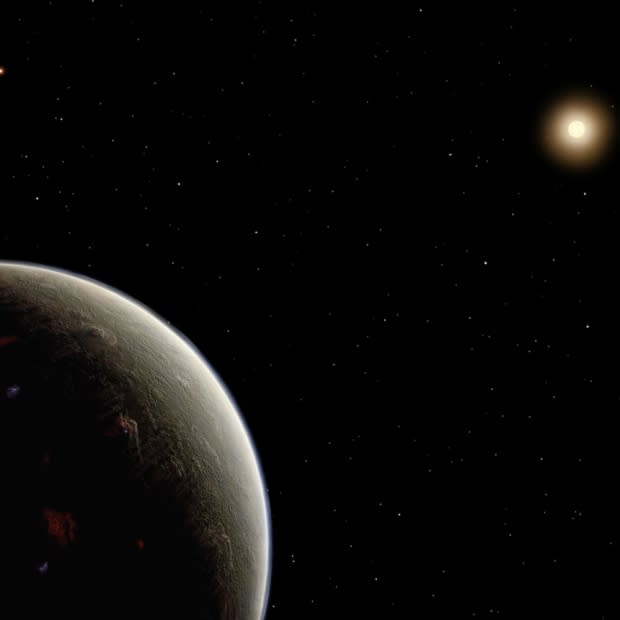Researchers discover planet Vulcan from Star Trek — sort of
Star Trek fans take note: the planet Vulcan is real.
It may not be inhabited by green-blooded, pointy-eared, humanoids (that we know of) and it's not even formally named Vulcan. But this newly discovered planet orbits a star that Star Trek creator Gene Roddenberry once claimed to be the parent star of his fictional planet Vulcan, home to the famous character of Mr. Spock.
The discovery of the planet, just 16 light-years away, makes it the closest "super Earth" — a rocky planet larger than our own — discovered to date.
The planet orbits a star known as 40 Eridani A, part of a triple-star system. It can be found in the constellation Eridanus, near Orion, a winter constellation in the northern hemisphere.
After a few Star Trek books named the star system as home to Vulcan over the years, Roddenberry, along with three scientists from the Harvard-Smithsonian Center for Astrophysics, wrote a letter in 1991 to the astronomy magazine Sky & Telescope, naming 40 Eridani A as the star around which Vulcan orbited.

And one of the astronomers studying the star system took note.
"Greg Henry, one of the co-authors, he pointed out, 'That's great, we found Vulcan around this star that was chosen in Star Trek,'" said Jian Ge, an astronomer with the University of Florida, and co-author of the study published in the journal Monthly Notices of the Royal Astronomical Society. "It was an amazing coincidence."
The star is very similar to our own.
It's four billion years old (ours is 4.6 billion years old) and undergoes a similar solar cycle of waxing and waning activity every 10.1 years. Our sun goes through this cycle every 11.6 years. It is slightly cooler and less massive than our own sun, but that works for the exoplanet since it is much closer to 40 Eridani A than Earth is to the sun.
"Therefore," co-author Matthew Muterspaugh, from Tennessee State University said the planet also known as HD 26965 "may be an ideal host star for an advanced civilization."
But the newly discovered planet isn't exactly Earth-like: It's larger and tidally locked, like the moon is with Earth. This means only one part of the planet faces the sun, while the other remains in darkness.
No problem, Ge said.
Though the planet would be dry — again, similar to Vulcan — a thin atmosphere would be enough to keep any potential life in temperate comfort.

But if anyone is hoping for a snapshot of the new planet, they'll have to wait. The discovery was made using the 50-inch Dharma Endowment Foundation Telescope, atop Mt. Lemmon in southern Arizona using non-visual spectroscopy, which separates and measures the light from stars.
"It's so exciting. Star Trek imagined this planet Vulcan and now we've found this planet," Ge said.
"We should not worry about human imagination. Sometimes imagination becomes reality."

